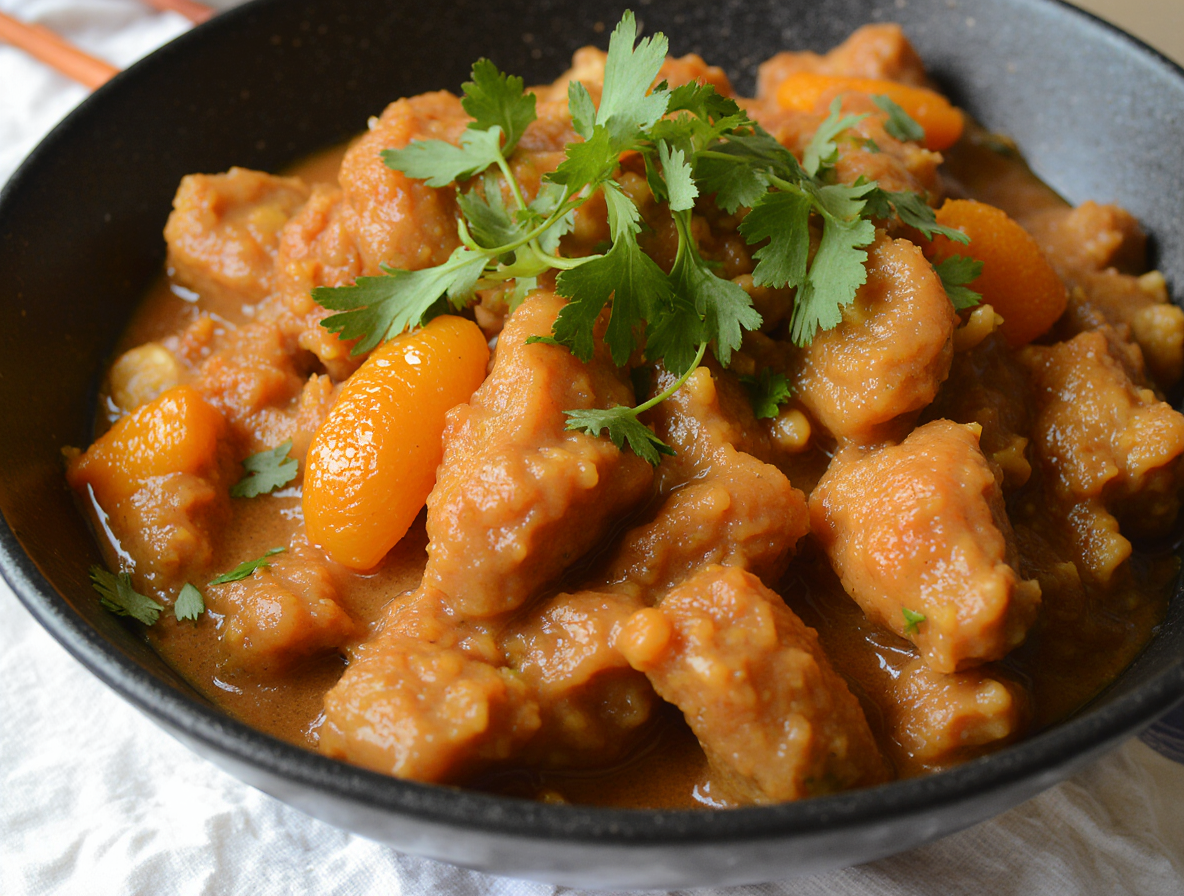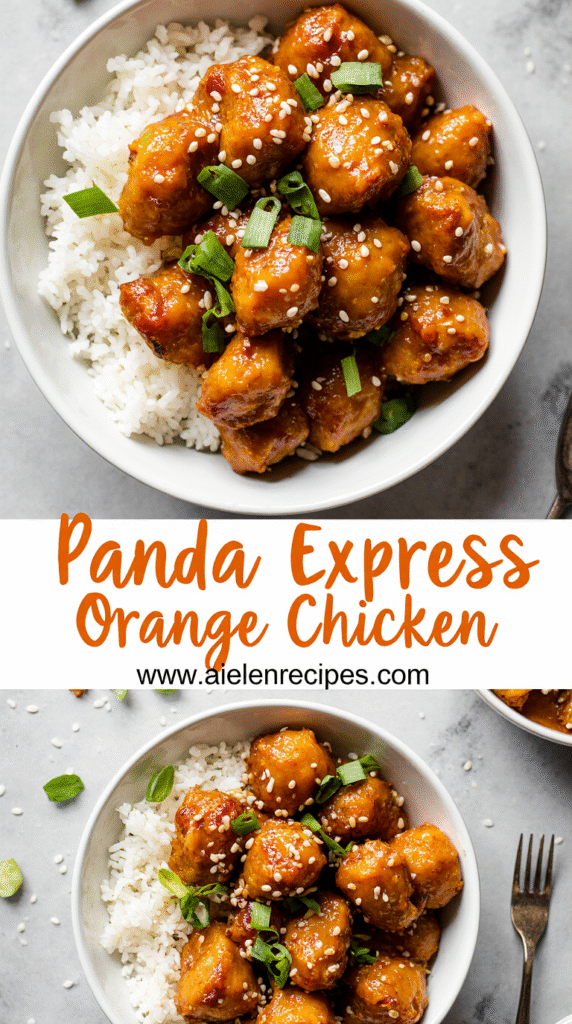Secret Panda Express Orange Chicken Sauce: A Chef-Tested Home Recipe
Panda Express orange chicken sauce creates that irresistible sweet-tangy glaze we all crave when ordering this popular dish. After countless takeout orders ranging from 380 to 900 calories per serving, I finally decided to decode this iconic sauce and create a homemade version that rivals the original.
Whether you’re working with chicken breasts or the juicier chicken thighs that weigh about 2 pounds when prepared for this recipe, the secret lies in the perfect sauce. In fact, authentic recipes call for key ingredients like fresh orange juice (about ⅓ cup from 2 juicy oranges), orange zest, and a combination of brown sugar and white sugar for that signature flavor profile. Moreover, I’ve discovered through testing that the preparation time of approximately 20 minutes makes this a feasible weeknight option that serves about 6 people, depending on your portion sizes.
Throughout this guide, I’ll share exactly how to make Panda Express orange chicken sauce at home with ingredients you likely already have in your pantry. You’ll learn the perfect balance of flavors, the right technique for thickening, and professional tips to customize the sauce to your preference.
What Makes Panda Express Orange Chicken Sauce So Addictive
The magic behind Panda Express orange chicken sauce lies in its carefully crafted formula that hits multiple pleasure centers in your brain simultaneously. Unlike ordinary sauces, this signature coating creates an experience that keeps customers coming back for more. Let’s break down the elements that make this sauce truly addictive.
The balance of sweet, tangy, and spicy
The hallmark of Panda Express orange chicken sauce is its perfect equilibrium between competing flavors. This signature sauce delivers a harmonious blend of sweetness, tanginess, and subtle heat that creates what many describe as a “sweet and tangy dance on the tongue”. At its core, the sauce combines sugar (both white and brown varieties), vinegar, soy sauce, and citrus elements to achieve its distinctive profile.
What sets this sauce apart is how it avoids being overwhelmingly sweet. Instead, it incorporates “vinegary kick to balance out the cloying sweetness that most restaurant versions have”. Additionally, the inclusion of red chili flakes provides just enough heat to create complexity without overwhelming the palate. This delicate balance ensures no single flavor dominates, resulting in a “lip-smacking umami finish” that lingers pleasantly.
Why texture and coating matter
The consistency of Panda Express orange chicken sauce plays a crucial role in its appeal. It must be “thick enough to cling well to every piece but not so syrupy that you have to scoop it up with a fork”. To achieve this perfect texture, the sauce utilizes cornstarch as a thickener.
Furthermore, the interaction between the sauce and the chicken’s coating creates magic. The crispy exterior of the chicken provides the ideal surface for the sauce to adhere to, creating textural contrast in each bite. This combination of crunchy and saucy elements is achieved partly through a precise 3:1 flour to cornstarch ratio in the batter. Consequently, each piece delivers that satisfying mouthfeel where crispy meets sticky in perfect harmony.
The role of aromatics in flavor depth
Beneath the obvious sweet-tangy profile lies a foundation of aromatics that gives Panda Express orange chicken sauce its complex character. Garlic, ginger, and scallions form the “bold, savory foundation” that elevates the sauce beyond simple sweetness.
These aromatics aren’t simply tossed in – they’re typically sautéed first to release their essential oils and develop depth. Notably, the orange component itself is more sophisticated than it appears, often combining both fresh orange juice and zest with dried orange peel for a multidimensional citrus profile. This layering of flavors creates complexity without requiring exotic ingredients.
The genius of the sauce lies in how these aromatics build upon each other to create a flavor that’s greater than the sum of its parts – familiar yet impossible to fully replicate without understanding these fundamental building blocks.
Panda Express Orange Chicken Sauce Ingredients Breakdown
Creating authentic Panda Express orange chicken sauce at home requires the right combination of ingredients. Let’s examine each component that gives this beloved sauce its signature flavor profile.
Orange juice and zest
The foundation of any orange chicken sauce starts with fresh citrus. Initially, you’ll need about 1/2 cup of fresh orange juice and approximately 1 teaspoon of orange zest. Using fresh oranges is highly recommended over store-bought juice, as it provides a brighter flavor without any artificial undertones. Primarily, this requires about 3-4 medium oranges to extract enough juice. The zest adds concentrated orange flavor and aromatic oils that juice alone cannot provide.
Soy sauce and rice vinegar
These two ingredients create the essential savory-tangy foundation. Typically, you’ll need about 3 tablespoons of soy sauce and 1/2 tablespoon of rice vinegar. Rice vinegar specifically gives the sauce its perfect tangy flavor without the harsh aftertaste common with other vinegars. Many recipes recommend low-sodium soy sauce to control the salt level while still delivering that rich umami character.
Brown sugar and white sugar
The sweetness in Panda Express orange chicken sauce often comes from a combination of sugars. Using both brown sugar (1.5 tablespoons) and white sugar creates deeper flavor complexity. The molasses in brown sugar adds richness, whereas granulated white sugar provides straightforward sweetness. Together, they create that signature sticky-sweet quality that coats each piece of chicken perfectly.
Garlic, ginger, and chili flakes
These aromatics form the flavor base. You’ll typically need 1 clove of minced garlic, 1 teaspoon of grated fresh ginger, and about 1/4 teaspoon of red pepper flakes. These ingredients should be sautéed briefly before adding the liquids to release their essential oils and deepen the overall flavor profile. The chili flakes provide that subtle heat that balances the sweetness.
Cornstarch slurry for thickening
A proper cornstarch slurry is crucial for achieving that glossy, restaurant-quality texture. For each cup of sauce, use 1 tablespoon of cornstarch mixed with 1-2 tablespoons of cold water. Always whisk thoroughly until completely dissolved before adding to your simmering sauce. During cooking, the cornstarch will activate, creating that perfect clingy consistency that adheres to chicken.
Optional: sesame oil for finish
Although not in the original Panda Express ingredients list, many homemade versions add a small amount of sesame oil at the end for extra depth and aroma. Just 1 tablespoon can transform the sauce, adding nutty complexity and authentic Asian flavor notes. Since it has a low smoke point, add it at the final stage of cooking.
How to Make Panda Express Orange Chicken Sauce at Home
Making authentic Panda Express orange chicken sauce requires attention to detail and proper technique. Ready to recreate this iconic sauce in your own kitchen? Let’s break down the process into five simple steps.
Step 1: Prepare the sauce base
First, gather all your ingredients to create the foundation of your sauce. In a medium bowl, whisk together 1 cup of orange juice, 2-3 tablespoons of soy sauce, and 3 tablespoons of brown sugar. Add 1-2 teaspoons of orange zest for that intense citrus flavor. For extra depth, include 1 tablespoon of rice vinegar or apple cider vinegar. Stir everything together until the sugar begins to dissolve.
Step 2: Cook aromatics for flavor
Heat 1 tablespoon of vegetable oil in a saucepan over medium heat. Add minced garlic (about 2-4 cloves) and freshly grated ginger (1-2 tablespoons). Cook for just 1-2 minutes until fragrant but not browned. This brief cooking process releases essential oils and builds the aromatic foundation of your sauce.
Step 3: Add liquids and sugars
Pour your sauce base mixture into the pan with the aromatics. If desired, add red pepper flakes (1/4 to 1 teaspoon depending on your spice preference). Bring the mixture to a gentle simmer, allowing the flavors to meld together. Let it cook for approximately 2-3 minutes, stirring occasionally.
Step 4: Thicken with cornstarch slurry
In a separate small bowl, create a cornstarch slurry by mixing 2 tablespoons of cornstarch with 2 tablespoons of cold water. Whisk until completely smooth with no lumps. Slowly pour this slurry into your simmering sauce while continuously stirring. Continue cooking for 3-5 minutes until the sauce thickens enough to coat the back of a spoon.
Step 5: Toss with fried chicken
Once your sauce has reached the perfect consistency, it’s time to combine it with your crispy fried chicken. Add the fried chicken pieces directly into the sauce. Using tongs or a wooden spoon, gently toss the chicken until each piece is evenly coated with the glossy orange sauce. Allow everything to simmer together for just 1-2 minutes more, which helps the sauce adhere perfectly to the chicken.
If desired, finish with a drizzle of sesame oil (about 1 tablespoon) for an additional layer of nutty flavor. This optional step adds remarkable depth to the final dish.
Pro Tips, Variations, and Storage
Now that you’ve mastered the basic sauce, let’s explore ways to customize your Panda Express orange chicken sauce and ensure it stays delicious even as leftovers.
How to adjust sweetness or spice
Perfecting your sauce is all about personal taste. For a sweeter sauce, add an extra 2-4 tablespoons of honey or incorporate orange marmalade for additional orange flavor. Conversely, if you prefer less sweetness, simply reduce the sugar amount.
To adjust spiciness, start with a small amount of sriracha—even 1/2 teaspoon might be too much for sensitive palates. Alternatively, add more red pepper flakes for heat or omit them entirely for kid-friendly versions. For serving a mixed group, consider offering sriracha or sambal oelek at the table.
Making it gluten-free or low-sugar
Creating a gluten-free version is straightforward—simply substitute soy sauce with gluten-free tamari or coconut aminos. Likewise, ensure your cornstarch is certified gluten-free.
For a less processed sauce, replace brown sugar with honey, maple syrup, or coconut sugar. Some home cooks have successfully halved the sugar while maintaining excellent flavor. Remember that orange juice naturally contains sugar, so your sauce will retain some sweetness even with reduced added sweeteners.
How to store and reheat leftovers
Store leftover orange chicken in an airtight container in the refrigerator for 3-4 days. For best results when reheating, use an oven preheated to 350°F for 10-15 minutes, covered with foil.
Alternatively, an air fryer set to 380°F for 3-5 minutes yields excellently crispy results. Microwaving works too—heat for 60-90 seconds covered with a paper towel, then let sit for a minute before serving.
Can you freeze orange chicken?
Indeed, orange chicken freezes well for up to 3 months. For optimal results, freeze the chicken and sauce separately. To freeze cooked chicken, cool completely, then freeze in a single layer before transferring to a freezer bag.
When ready to enjoy, thaw overnight in the refrigerator. The texture may change slightly, particularly affecting crispiness.
Serving suggestions beyond rice
Beyond basic steamed rice, try serving your orange chicken over:
- Cauliflower rice for a lower-carb option
- Various noodles including lo mein, udon, or rice vermicelli[263]
- A crisp salad with bell peppers and favorite vegetables
- Sautéed green beans or stir-fried vegetables
- Bok choy or broccoli for added nutrition
Garnish with sliced green onions, sesame seeds, or even thinly sliced carrots for extra texture and visual appeal[263].
Conclusion
After testing countless variations of this iconic sauce, I can confidently say homemade Panda Express orange chicken sauce rivals the restaurant version. The perfect balance of sweet, tangy, and spicy flavors creates that unmistakable taste we crave from takeout, but now you can make it in your own kitchen for a fraction of the cost.
Additionally, your homemade version offers complete control over ingredients – adjust sweetness, spice levels, or dietary restrictions while still achieving that signature sticky-sweet coating. Most importantly, the simple ingredients likely already exist in your pantry, making this recipe accessible whenever cravings strike.
The combination of fresh orange juice, aromatic spices, and the perfect thickening technique transforms ordinary chicken into something extraordinary. Whether you stick to the classic recipe or customize it with your own twist, this sauce delivers that restaurant-quality experience without leaving home.
Lastly, remember that orange chicken sauce works wonderfully beyond just chicken. Try it with tofu, shrimp, or even as a glaze for roasted vegetables. The versatility of this sauce means your culinary creativity has no limits. Now you hold the secret to one of America’s favorite takeout flavors – time to start cooking!
FAQs
Q1. What are the key ingredients in Panda Express orange chicken sauce? The main ingredients include orange juice, soy sauce, brown sugar, white sugar, rice vinegar, garlic, ginger, and red chili flakes. A cornstarch slurry is used for thickening, and some recipes add sesame oil for extra flavor.
Q2. Can I make a healthier version of orange chicken sauce at home? Yes, you can create a healthier version by using less sugar, substituting honey or maple syrup for refined sugars, and using low-sodium soy sauce. For a gluten-free option, replace regular soy sauce with tamari or coconut aminos.
Q3. How long can I store homemade orange chicken? Leftover orange chicken can be stored in an airtight container in the refrigerator for 3-4 days. For longer storage, you can freeze it for up to 3 months, preferably with the chicken and sauce stored separately.
Q4. What’s the best way to reheat orange chicken? For best results, reheat orange chicken in a preheated 350°F oven for 10-15 minutes, covered with foil. Alternatively, use an air fryer at 380°F for 3-5 minutes for a crispy texture. Microwaving is also an option, but may affect the chicken’s crispiness.
Q5. Can I use the orange chicken sauce for other dishes? Absolutely! The orange chicken sauce is versatile and can be used with tofu, shrimp, or as a glaze for roasted vegetables. It also pairs well with various types of noodles, cauliflower rice, or stir-fried vegetables for a complete meal.


